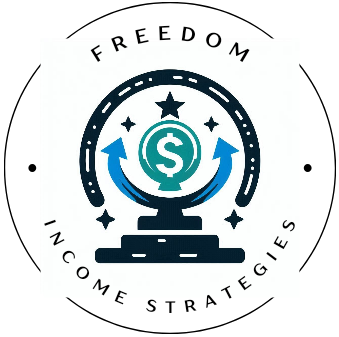Passive income is a popular term that often sparks excitement. It sounds like the dream—earning money while you sleep, travel, or spend time with your family. Whether it’s through dividend investing, affiliate marketing, options trading, or creating digital products, passive income can open up new financial possibilities. But, as appealing as it sounds, many people have valid concerns when they first start thinking about passive income.
In this post, we’ll dive into some of the most common concerns with passive income and how you can address them.
1. Is Passive Income Truly “Passive”?
One of the biggest misconceptions about passive income is that it’s easy money with no effort. While it’s true that once a system is set up, it can generate income on autopilot, getting to that point requires effort, time, and planning.
For instance, if you’re building an affiliate marketing business, you need to create quality content, research the best programs, and drive traffic to your site. Dividend investing also requires an upfront commitment—you need to save money to invest, pick the right stocks, and keep tabs on your portfolio.
The reality: While passive income may reduce the time spent earning money in the long run, the initial effort is far from passive. However, once established, it can provide a relatively hands-off income stream.
2. How Long Does It Take to See Results?
Patience is key when building passive income streams. Many people want to know how long it takes before they start seeing results, and the truth is, it depends.
For example, in the case of dividend investing, it could take years to see significant income unless you start with a large capital. If you’re building a blog to generate affiliate income, it may take months to gain traffic, and it’s even longer before that traffic turns into sales. The key is consistency. As with many things in life, the more effort and persistence you put in early, the quicker you’ll see results.
The reality: Expecting immediate results can lead to frustration. It’s important to treat passive income like a long-term project rather than a get-rich-quick scheme.
3. What If My Income Stream Dries Up?
A common concern about passive income streams is whether they are sustainable. There are plenty of horror stories of blogs that stop making money because of algorithm changes or affiliate programs that reduce commissions. Dividend stocks could cut or eliminate payouts if a company struggles. The key to addressing this concern is diversification.
How to overcome this: Don’t rely on just one source of passive income. By spreading your efforts across different methods, such as dividend investing, affiliate marketing, and digital product sales, you reduce the risk of losing all income at once. Diversification is crucial in both investing and business.
The reality: No income stream is 100% guaranteed forever. By diversifying your income sources, you can protect yourself from sudden changes.
4. How Much Money Do I Need To Get Started?
One of the barriers to entry for many passive income methods is capital. Dividend investing, for example, typically requires a sizable upfront investment if you want to see meaningful returns. Real estate investment also needs a lot of capital. On the flip side, affiliate marketing or creating digital products may have a much lower starting cost, but they still require tools like hosting, website design, and possibly ad spend.
How to overcome this: Start small and scale up. If you’re limited on funds, focus on low-cost methods like affiliate marketing or building an audience on social media. Reinvest any earnings back into your income-generating activities. Over time, you can take your profits and diversify them into other, more capital-intensive streams, like dividend stocks or real estate.
The reality: Not all passive income methods require large sums to start. Begin with low-cost strategies, and scale as you grow.
5. What If I’m Not Tech-Savvy?
A lot of the popular methods for generating passive income—like blogging, creating digital products, or running an online store—require some degree of technical knowledge. If you’re not particularly tech-savvy, this can be a significant hurdle.
The good news is that plenty of tools, tutorials, and services are available to help. Platforms like WordPress make it easy to build a blog without coding, and there are countless courses and communities (like Wealthy Affiliate) that can guide you step by step. Plus, hiring help on platforms like Fiverr or Upwork can be an affordable solution to getting over those initial tech hurdles.
The reality: While some passive income streams require technical knowledge, there are plenty of resources to help you get started, even if you’re a beginner.
6. Will It Take Away From My Other Responsibilities?
If you’re working full-time or have a busy family life, one big concern is whether building passive income streams will take away too much time from your other responsibilities. This is a valid concern, especially for those juggling a lot of commitments.
Fortunately, many passive income methods allow for flexibility. For example, affiliate marketing or dividend investing doesn’t require you to be “on” 24/7. You can work on these during your downtime and build gradually. It’s also possible to automate parts of the process, such as using email marketing sequences, social media scheduling tools, or even a virtual assistant to handle repetitive tasks.
The reality: Passive income can be built around your schedule. Start small, automate where possible, and scale up once you’re comfortable.
7. Is Passive Income Worth The Risk?
Like any income-generating method, passive income isn’t without risks. You might invest in a dividend stock that cuts its dividend or launch a product that doesn’t sell. However, the risk can be minimized by researching, planning, and testing.
Start with low-risk strategies and increase your risk tolerance as you learn more. For example, starting with blue-chip dividend stocks or proven affiliate programs can offer a safer entry point.
The reality: Passive income, like all financial activities, carries some risk. However, with research and smart decisions, you can minimize the risks and increase your chances of success.
The Bottom Line: Is Passive Income For You?
Passive income is an exciting and achievable goal, but it’s not without challenges. The biggest takeaway is to approach it with realistic expectations. It takes time, effort, and often a bit of trial and error. But once you build a reliable income stream, the rewards can be well worth the effort.
Whether you’re diving into dividend investing, exploring affiliate marketing, or creating digital products, remember that diversification, patience, and persistence are key.

